Abstract
The length-tension relationship and the effect of paired electrical stimulation were studied in right ventricular papillary muscles obtained from cats. The animals were divided into three age groups: neonatal kittens, less than 24 hr of age; infant kittens, 16--18 days of age; and adult cats. 2. The muscles were electrically driven to contract isometrically using field stimulation at 10--20% above the threshold valus. 3. At Lmax the neonatal preparations produced significantly less developed (active) tension than did the adult preparations. The resting tension at Lmax was significantly greater in the neonatal preparations than in the adult ones. The infant group occupied an intermediate position between the two other groups. 4. The response to paired electrical stimulation was less in the neonatal group than in either the infants or the adults. 5. It is concluded that post-natal developmental changes occur in the contractile properties of the myocardium of the cat.
Full text
PDF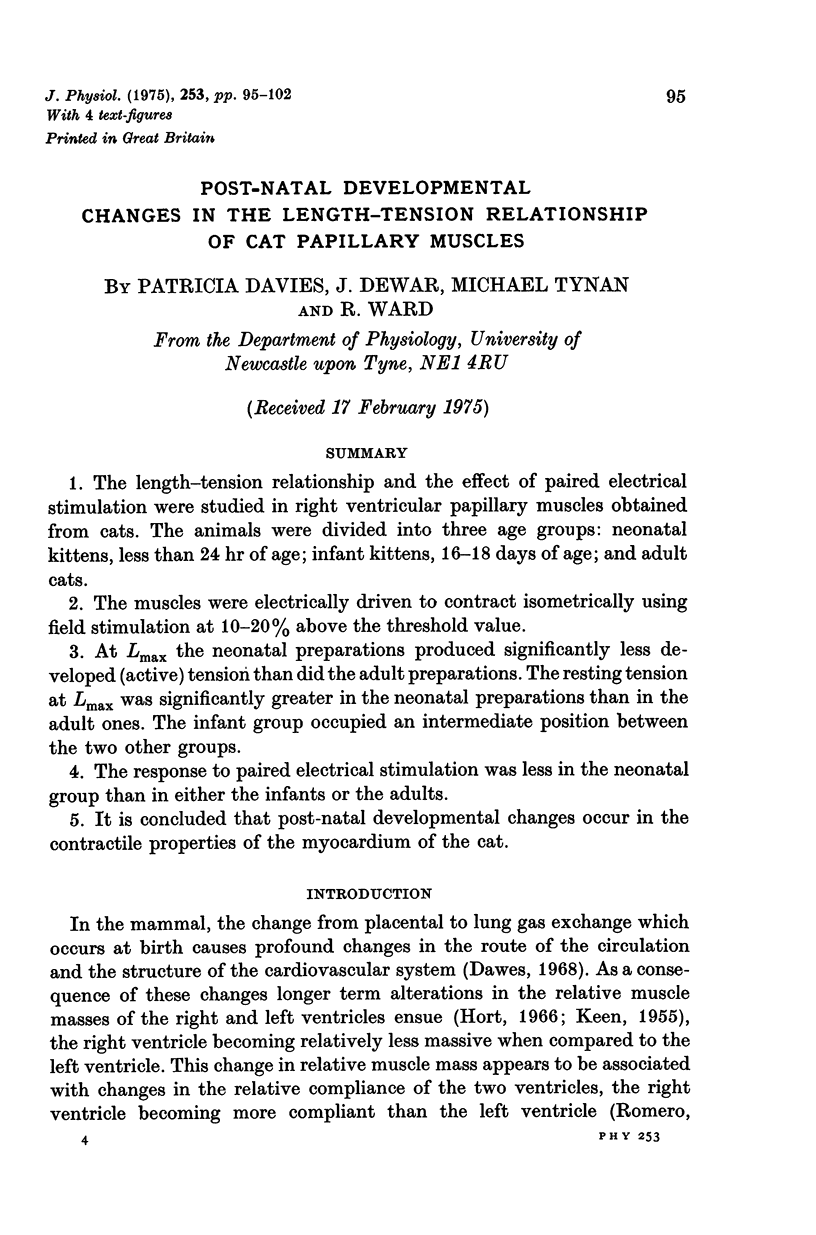
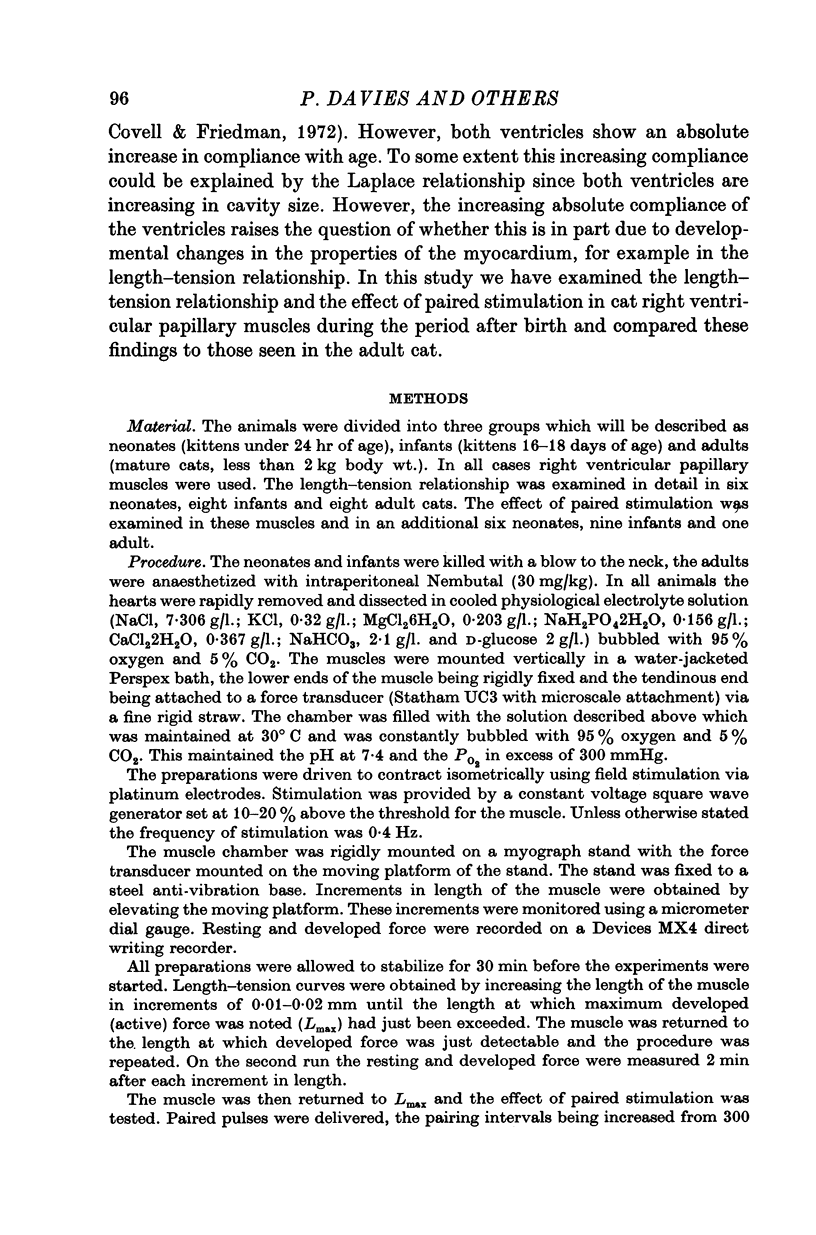
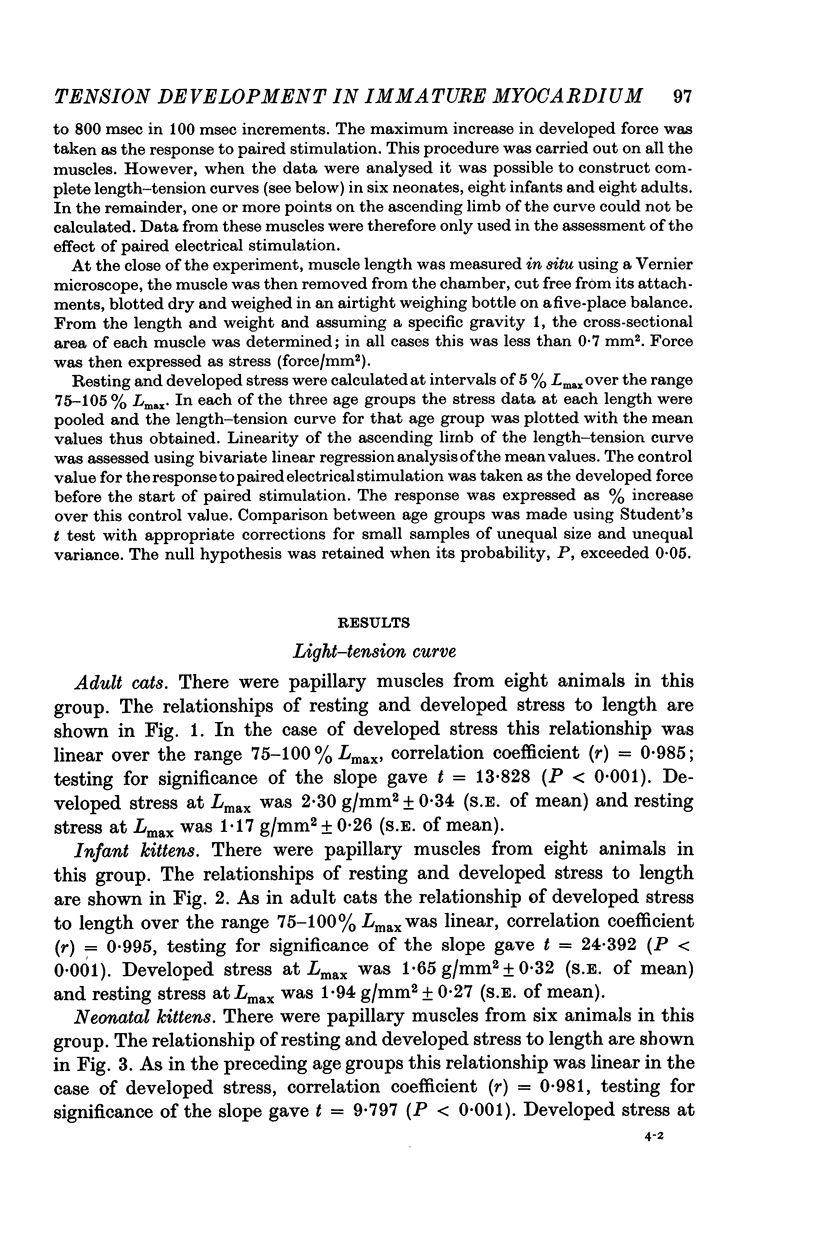
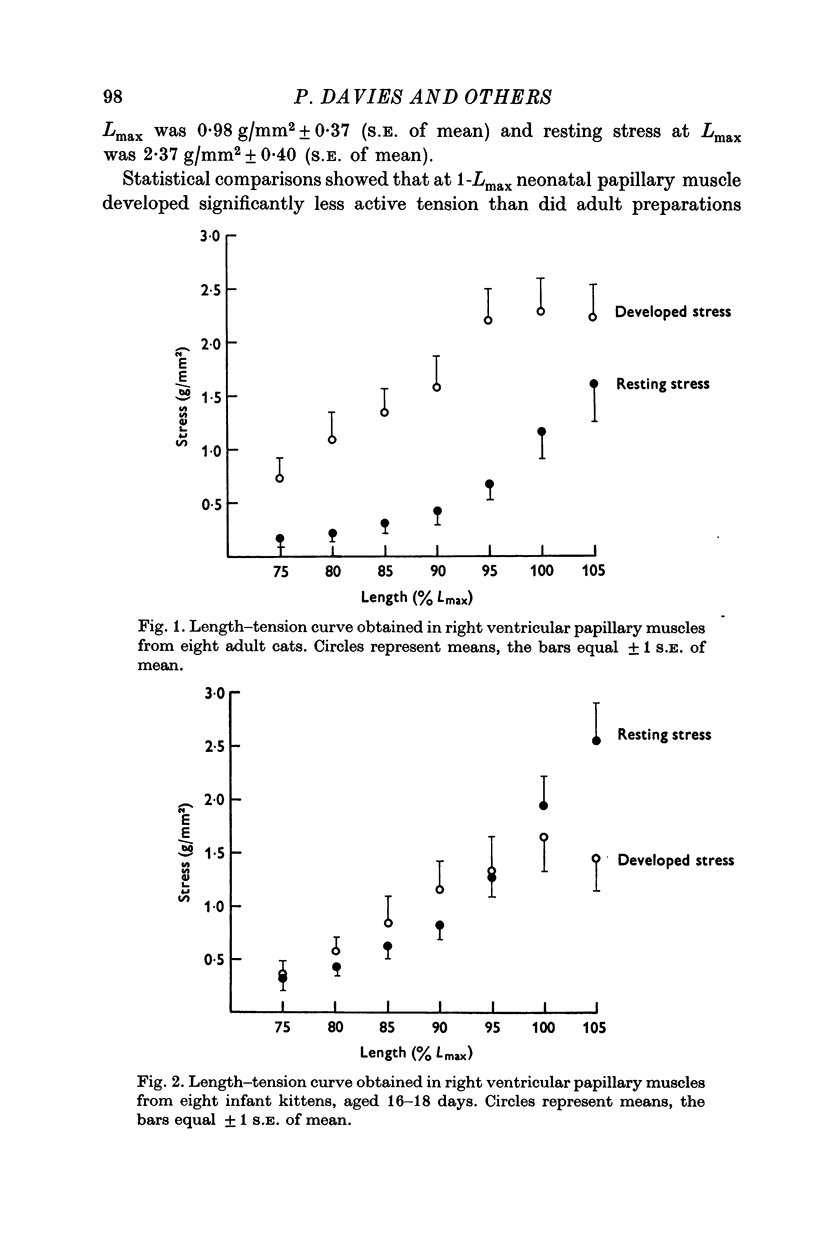
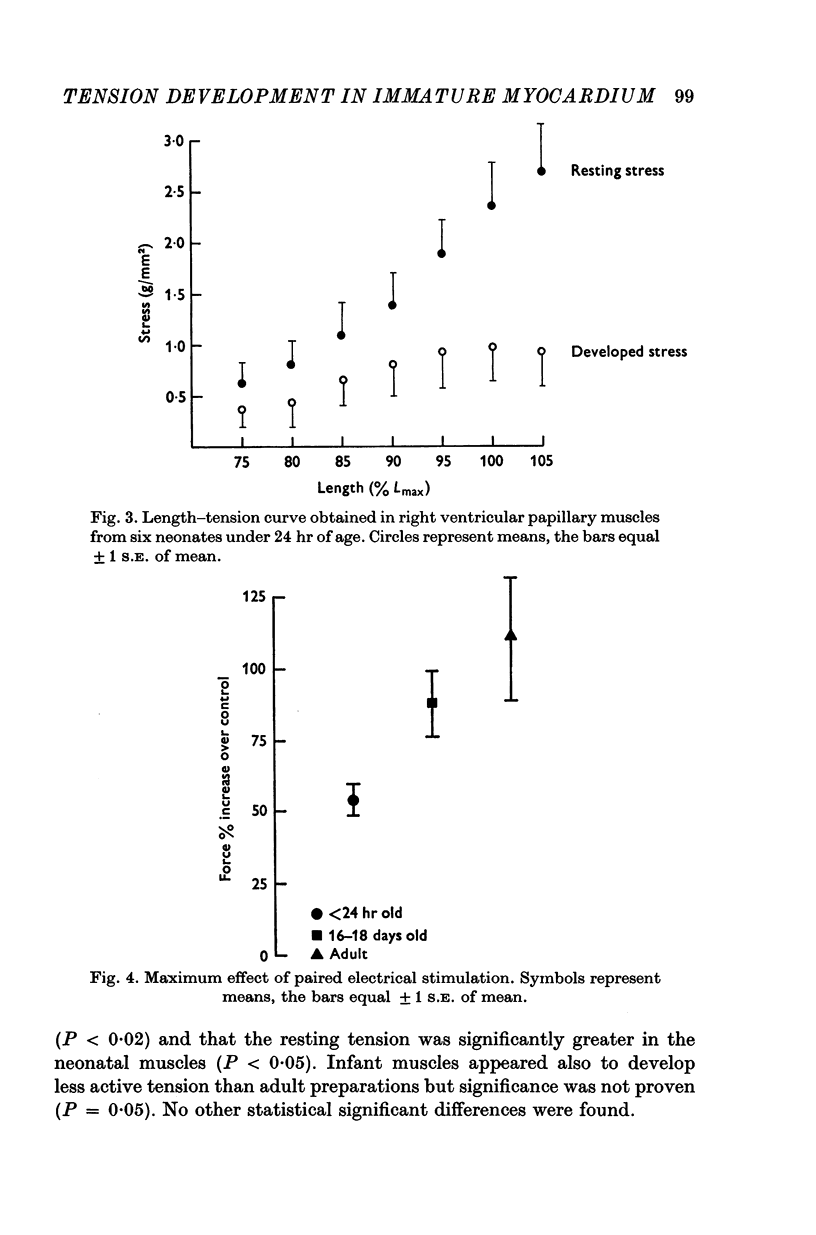
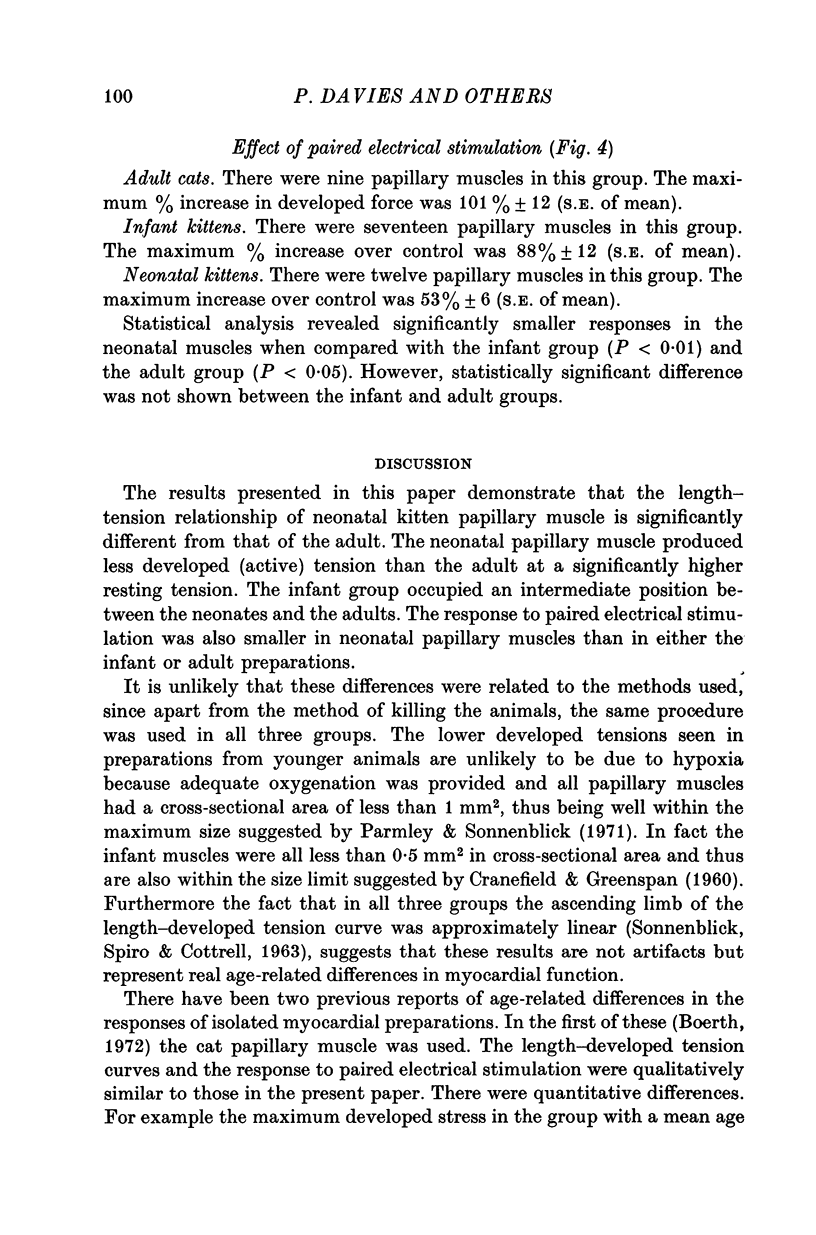
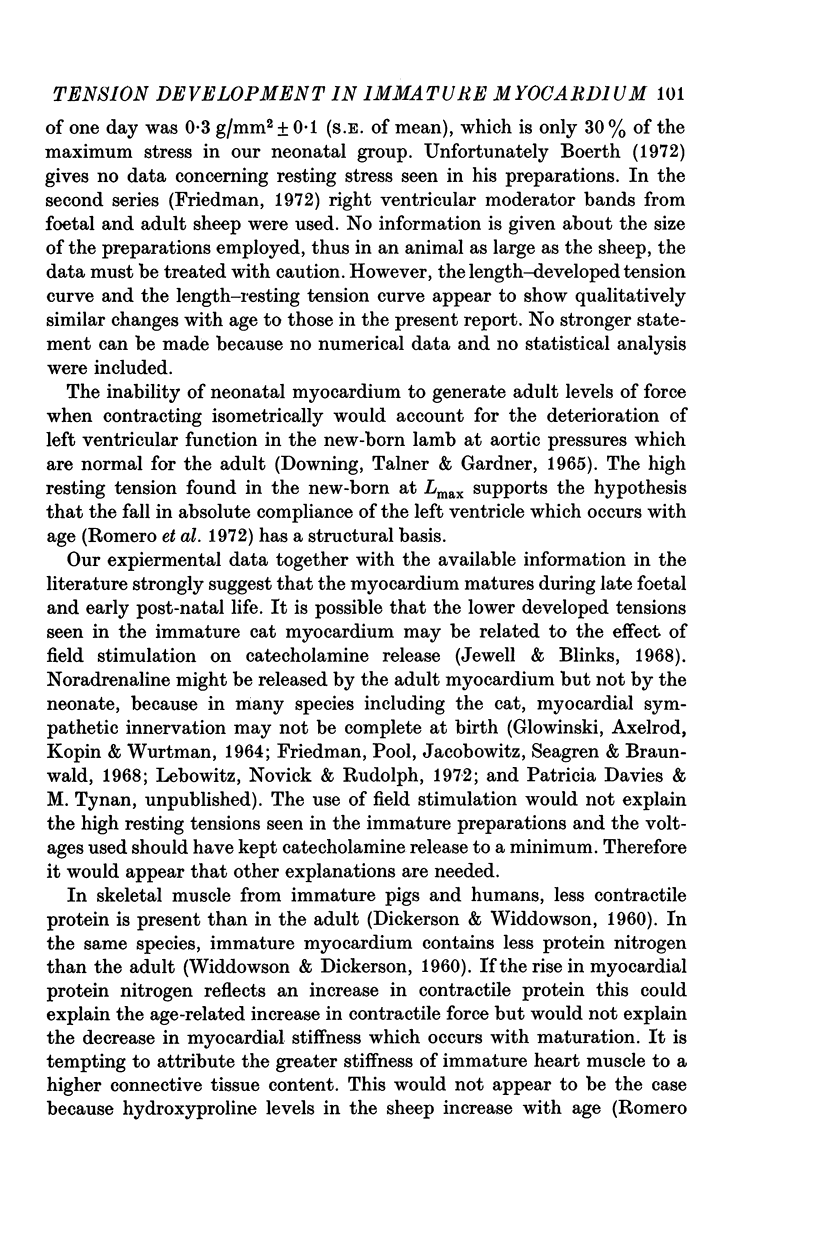
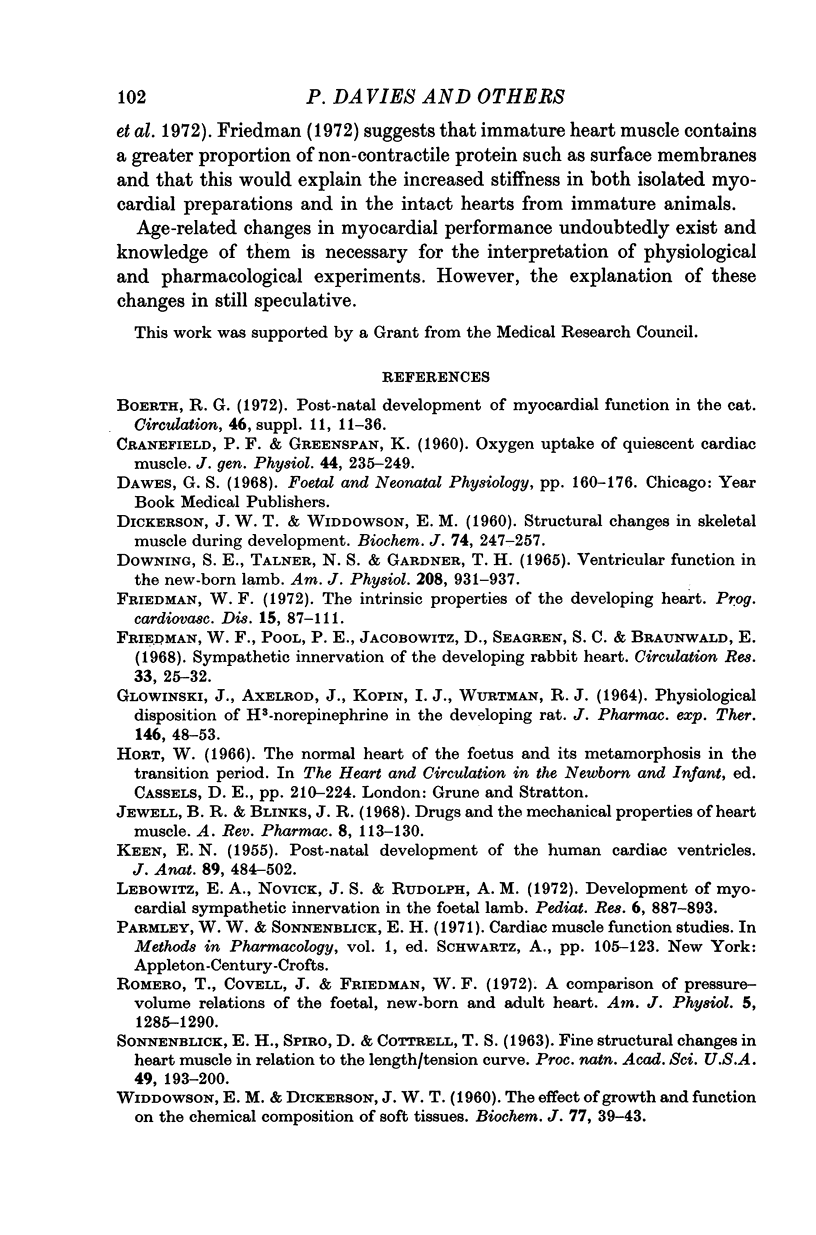
Selected References
These references are in PubMed. This may not be the complete list of references from this article.
- CRANEFIELD P. F., GREENSPAN K. The rate of oxygen uptake of quiescent cardiac muscle. J Gen Physiol. 1960 Nov;44:235–249. doi: 10.1085/jgp.44.2.235. [DOI] [PMC free article] [PubMed] [Google Scholar]
- DICKERSON J. W., WIDDOWSON E. M. Chemical changes in skeletal muscle during development. Biochem J. 1960 Feb;74:247–257. doi: 10.1042/bj0740247. [DOI] [PMC free article] [PubMed] [Google Scholar]
- DOWNING S. E., TALNER N. S., GARDNER T. H. VENTRICULAR FUNCTION IN THE NEWBORN LAMB. Am J Physiol. 1965 May;208:931–937. doi: 10.1152/ajplegacy.1965.208.5.931. [DOI] [PubMed] [Google Scholar]
- Friedman W. F., Pool P. E., Jacobowitz D., Seagren S. C., Braunwald E. Sympathetic innervation of the developing rabbit heart. Biochemical and histochemical comparisons of fetal, neonatal, and adult myocardium. Circ Res. 1968 Jul;23(1):25–32. doi: 10.1161/01.res.23.1.25. [DOI] [PubMed] [Google Scholar]
- Friedman W. F. The intrinsic physiologic properties of the developing heart. Prog Cardiovasc Dis. 1972 Jul-Aug;15(1):87–111. doi: 10.1016/0033-0620(72)90006-0. [DOI] [PubMed] [Google Scholar]
- GLOWINSKI J., AXELROD J., KOPIN I. J., WURTMAN R. J. PHYSIOLOGICAL DISPOSITION OF H3-NOREPINEPHRINE IN THE DEVELOPING RAT. J Pharmacol Exp Ther. 1964 Oct;146:48–53. [PubMed] [Google Scholar]
- KEEN E. N. The postnatal development of the human cardiac ventricles. J Anat. 1955 Oct;89(4):484–502. [PMC free article] [PubMed] [Google Scholar]
- Lebowitz E. A., Novick J. S., Rudolph A. M. Development of myocardial sympathetic innervation in the fetal lamb. Pediatr Res. 1972 Dec;6(12):887–893. doi: 10.1203/00006450-197212000-00006. [DOI] [PubMed] [Google Scholar]
- Romero T., Covell J., Friedman W. F. A comparison of pressure-volume relations of the fetal, newborn, and adult heart. Am J Physiol. 1972 May;222(5):1285–1290. doi: 10.1152/ajplegacy.1972.222.5.1285. [DOI] [PubMed] [Google Scholar]
- SONNENBLICK E. H., SPIRO D., COTTRELL T. S. Fine structural changes in heart muscle in relation of the lengthtension curve. Proc Natl Acad Sci U S A. 1963 Feb 15;49:193–200. doi: 10.1073/pnas.49.2.193. [DOI] [PMC free article] [PubMed] [Google Scholar]
- WIDDOWSON E. M., DICKERSON J. W. The effect of growth and function on the chemical composition of soft tissues. Biochem J. 1960 Oct;77:30–43. doi: 10.1042/bj0770030. [DOI] [PMC free article] [PubMed] [Google Scholar]


